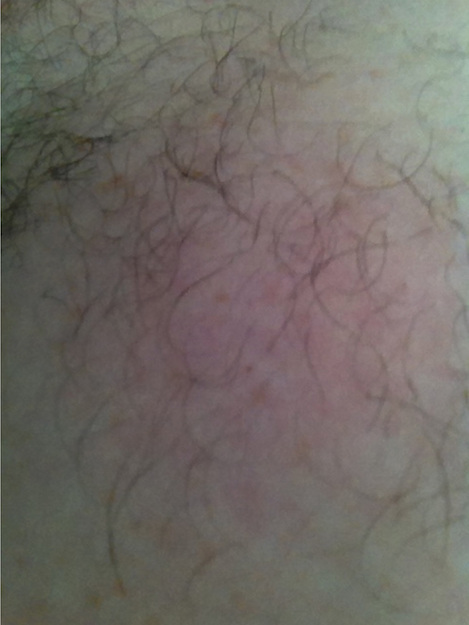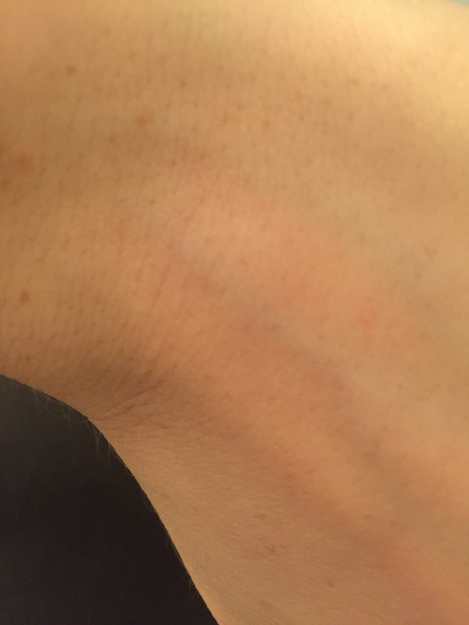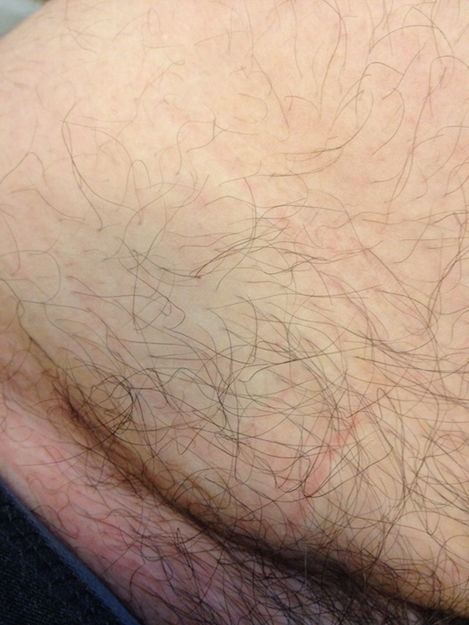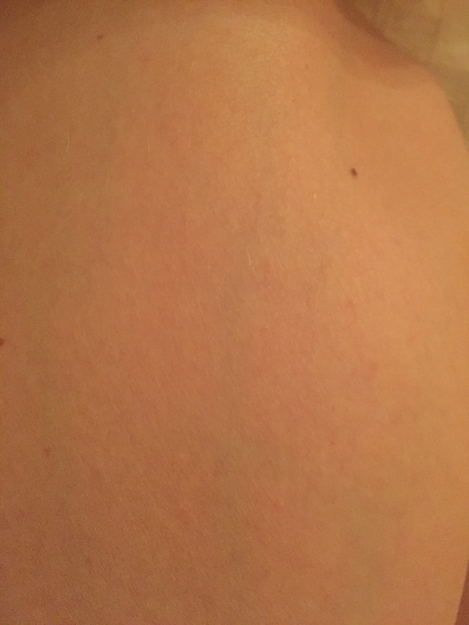CAMILLA NELSON: Give Me Your Body in the Context of Your Body
An Interview with Valgerður Þóroddsdóttir and Richard Scott on their collaboration for SJ Fowler’s Eurocamarade at the Free Word Centre in London, 20th November 2015.
Two figures stand on stage, in profile to the audience, facing each other
One is a man [the man stands on the left-hand side of the stage]
The other is a woman [the woman stands on the right-hand side of the stage]
She speaks give me your body in the context of your body
They read love letters to each other out loud
They have written love letters to each other
They read love letters to others out loud
They have written love letters to others
They read love letters to themselves out loud
They have written love letters to themselves
behind them both an image projects on the screen
emerge suggest intimate obscene
behind them both an image projects on the screen
[the man and the woman swap sides]
behind them both an image projects on the screen
emerge suggest intimate obscene
behind them both an image projects on the screen
Two figures stand on stage, in profile to the audience, facing each other
One is a woman [the woman stands on the left-hand side of the stage]
The other is a man [the man stands on the right-hand side of the stage]
He speaks give me your body in the context of your body
They read love letters to each other out loud
They have written love letters to each other
They read love letters to others out loud
They have written love letters to others
They read love letters to themselves out loud
They have written love letters to themselves
Who introduced the theme and mode of exchange for your Camarade collaboration? How did you feel/respond?
Vala: After Steven Fowler paired us together, Richard and I met up over Skype and tried to find some common ground from which to grow our collaboration. I think I mentioned that my work is very concerned with physicality at the moment, and as soon as I said that I remember Richard just lighting up. Once we had read a bit of each other’s work, it just became obvious that this would be a starting point: the body.
Richard: Hmmmmm, it’s hard to say who came up with it exactly… Over skype, Vala and I were discussing each other’s poetry and how we both liked to write about physicality and the body and I remember we got to talking about ‘the bum game.’ This is a game you play when you’re a kid: you shut your eyes and a friend places your finger on a part of their body, you have to guess what part it is just by feeling. The aim was always to gross each other out by trying to make the other person believe they were touching your bum when really they were just touching your arm or neck. This game inspired us, and gave us a way to get to know each other, so we decided to play it from afar with images. We decided we would send each other images of our body that would consciously mislead or be confusing, whilst promising that they were actually of our own bodies. We wanted to do something intimate without being explicate, I suppose. We wanted to get to know each other through these images as well as through our words. We wanted to try to capture some of the innocence that there can be when you first start exploring someone else’s body.
Vala: I think it was Richard who suggested we send each other photographs as prompts. Initially I quite liked the idea. It seemed an interesting commentary on the premise of this kind of collaboration. In order for the piece to be honest and real, I felt we were going to have to trust each other and be quite vulnerable. In a way, it felt like we were being asked to get naked in front of one another. So it didn’t feel like much of a stretch to adopt a kind of narrative of us being like a couple trying to achieve some sort of intimacy over the internet. In a way that was what we were attempting to do. It seemed like a clever strategy for diffusing the tension and allowing us to not think too much about what it was that we were actually doing.

How did your exchange proceed? How did you feel on receiving these images and how did this affect your response?
R: I think I was a bit forward in this respect, I loved the idea, so I just sent Vala a rather hairy photo the next day. I didn’t hear from her for a few days so I worried that I’d offended her, but luckily she also loved the idea and soon responded with some text that became the opening of our poem. The exchange carried on in a similar fashion, we would await text and images from the other person and then respond. You can tell which images belong to me ‘cause they’re pale and hairy, whereas Vala’s are very beautiful, smooth and peach-coloured. For weeks I was carrying around images of Vala’s body on my laptop, thinking about them and how I might respond. It was very surreal and beautiful.
V: When it came down to actually sending and receiving these pictures, the whole thing did freak me out a bit. It’s hard to explain why. Certainly it has something to do with the fact that there is this real, common phenomenon in the world of (especially) men sending unsolicited images of their bodies as a kind of aggressive, invasive gesture. And even though I didn’t get that vibe at all from Richard, and the image he sent wasn’t all that explicit, I couldn’t help having this sort of knee-jerk reaction to his first picture.
The problem was also maybe that, the way I deal with physicality in my work, I’m not all that concerned with the physical in its literal, concrete sense. I think that has something to do with the fact that there is so much explicit use of the female body in advertising and pornography, which feels to me so extremely sterile and alien and removed from what it actually feels like and what it actually means to inhabit a body. So at first, maybe I was a little creatively turned off by the concreteness of this image.
I struggled with these concerns for a few days before deciding just to trust Richard and suspend judgement until this experiment had progressed a bit further. I ended up sending him this quite cerebral response, which wasn’t all that poetic but ended up being excerpted at the beginning of our poem:
give me your body
in the context
of your body
R: When Vala sent me an image I felt as if I’d got this most incredible and intimate present – something really unusual that indicated trust and intimacy and of course, friendship and collaboration. The only other images I have ever received like it were from my boyfriend, so it felt startling to be getting such pictures from someone else – even though the motivations for sending them were very different, and a different type of intimacy was achieved.
It made me think a lot about online dating and apps, how gay men can be so happy to send jpgs of their bums and dicks sometimes, but actually how because of the desire attached, these images tend to not be very intimate at all . . . the images that Vala sent me of her own skin and curves felt so sensual and rare. I’ve been sent a lot of dick-pics in my life but none of them made me feel as inspired as Vala’s mysterious body shots.
V: When Richard’s response came, I was absolutely blown away. What he had written was so beautiful and interesting and warm and sexy but in this very generous and entirely non-threatening way. And my concerns pretty much dissipated after that. I realised suddenly what this piece was about. I think Richard mentioned this point of trying to capture the excitement and innocence of first exploring someone’s body. I very much agree with that. But to me the piece is also about how, in intimacy, inevitably you find yourself reflected in the other person. Real intimacy requires a kind of… inhabitation. Not just exhibition. This is why a dick pic to me can never be intimate, even though in its literal sense it is intimate. But it is primarily a demonstration, a spectacle. It does not make room for anything beside itself. And the images Richard and I sent one another had room in them for so many things – for poetry, certainly, but also for a lot of reflection. As with Richard’s first textual response, for example, I felt like he had reflected himself in my skin. It was somehow about neither of us and both of us at the same time.
oh my god oh my beautiful peach-freckled luminous
bone and blue-lit from within
animal-warm malleable
[…]
skin like a sunset spread over the seafront
and everything is possible
I was inspired and put at ease, and from that point forward I think we were remarkably in sync.
R: I found that the colour of the images, the shade of Vala’s skin, the lighting, and how that implied touch and taste and smell, was what really inspired me. I was essentially trying to bring Vala’s images to life through writing about them. It feels odd that something so vital and vivid like a body can be rendered 2D and dead by an image, which by it’s very purpose claims to capture life. I also found myself trying to think a lot about the differences between men and women’s bodies and the different type of sexual experiences you might have with both. As a gay man, I did sleep with women when I was younger, but memory is misleading and I mostly found myself trying to break free of social clichés about the difference between bodies. Women are not automatically soft and men are not just hard, for instance. I had to be very honest.

How did the form of the piece develop (i.e. the relationship between the writing and the images and the decisions you made re: your performance)?
R: I always knew that I wanted to put the images on slides and then read in front of them, but Vala wisely made me consider if that would be distracting or not. Ultimately we decided to go for it, but we did consider what effect just hearing these words might have. Vala also wanted us to read facing each other, as if we were reading out love letters, which in a sense, our poems were: love letters to each other’s bodies.
V: In a way we kept the piece very much intact from the initial writing. We edited the text a bit but we didn’t blend the responses together at all. I think we both thought of them sort of like these love letters or odes that had their own context and were in their own way whole. When I was thinking about how this collaboration might look on stage it occurred to me that it would be very true to the piece for us to read facing one another. Maybe also because there is this question of reflection – of feeling or seeing yourself reflected in someone else’s eyes. I wanted Richard to hear how I had heard his words in my head when I read them. I think that’s a very generous and beautiful and rare gesture to give someone: This is how I feel when I read this.
How did you feel upon meeting each other for the first time?
R: Well, I knew I liked Vala a lot because we had met on skype and emailed loads and I knew I loved her work so I was super excited to meet her. And of course actually meeting her was extraordinary, she’s a very warm person and she’s very elegant and beautiful too. We met for the first time about an hour before our performance so this urgency saved us from any nervousness or too much thinking about what parts of each other’s bodies we had seen. We just wanted to rehearse and connect.
How did it feel to perform this piece, both in terms of the dynamics between you as performers and in sharing the work with an audience?
V: I was surprised by how emotional the performance was, at least for me. My heart was racing the whole time. Part of it was that we were looking each other in the eyes the whole time as we were saying these things. And also I had no idea what Richard’s reading-voice sounded like before that moment, so it was all very new and strange and exciting. I hope the fact that we read the piece to one another helped to solidify for the audience that this was not as much a performance or an exhibition as it was a kind of exchange.
R: I loved performing with Vala, she’s very generous and supportive and totally relaxed me. Sharing what we had made with an audience was so ace – an audience, I should say, of incredibly interested and supportive people. What SJ Fowler is currently doing – creating networks, poetic communities and audiences, who come together without preconceived notions or boundaries – is an epic and essential thing; he is a hero.

What were the issues or politics you were keen to explore/challenge in this work?
R: I didn’t have any pre-conceived notions about this, but it soon became clear that we were writing about the body and about sexuality and so I suppose I became aware that I wanted to honestly explore the difference between men and women’s bodies and how a gay male poet and a heterosexual poet might collaborate on a piece about physicality. Usually I don’t think labels or boxes are helpful but in talking about the piece I think it’s interesting to mention that Vala is straight and that I am gay because I am interested in how gay poetry doesn’t just connect with gay readers, but with anyone who’s open to listening and experiencing it. When I was younger, gay literature and thoughts used to be so ring-fenced and so other, but now that’s changing, which makes me feel so very happy. And Vala was so very open. We read each other’s lines during part of the performance and it was wonderful to hear words written by a gay man being read by a straight woman.
V: I think what Richard and I ended up doing is creating a kind of no-man’s land out of our own bodies. A kind of abstract place where the other person could find a creative jumping-off point. Which is a very generous and beautiful gesture and I almost can’t believe we did it.
The piece made me think a lot about what it means to be a body out of context. It explored this question of – what relationship does an image of a body have to an actual body, or to physicality or sexuality or intimacy in general?
R: If there are politics at play in our work, for me they rest in the sphere of acceptance and in the challenge of a normal male to female poetic relationship. History records men writing about women’s bodies for thousands of years – how nice to be involved in a project where a woman writes about my body and a gay man reflects on what a woman’s body might mean to him. The line
and what of your red opening from which I came and
cannot return
tries to capture some of the irony implicate in gay experience, how we physically originate from a vagina but then have very little interaction with them for the rest of our lives compared to women, who have their own, and straight men, who are attracted to them. This is something which is rarely discussed or referenced. How can a gay man write about a woman’s body without considering this fact?
Our piece didn’t set out to influence anyone. We just wanted to invite listeners into our collaborative space in the hope that they might see how our piece which, whilst exploring notions of gender and sexuality, also exists beyond that. It is possible to move beyond discussions of individual bodies to a place of pan-sexuality and co-joined genderless bodies. It would be nice if someone read [or heard] our piece and couldn’t tell if it was written by a man or a woman. It’s a collaboration beyond our sexes and sexualities, I hope.

Did the work achieve what it set out to do?
V: It’s hard to say. I think primarily we set out to find some common creative ground between Richard and me. That was essentially our assignment. So in that sense, we certainly achieved what we set out to do. But beyond that I don’t think either of us had any specific expectations about the piece. It was interesting that after the performance, people were coming up to us and asking whose words were whose. I think that could be a benchmark for the success of the piece – we managed to stumble into some kind of shared space where our words became interchangeable. We managed to reflect one another, in a way. The words and the images became about both of us and neither of us at the same time.
Valgerður Þóroddsdóttir is a poet, publisher and literary curator. She is the founder and director of Partus, an independent publisher located in Reykjavík, Iceland. Her work has been featured in journals, magazines and radio in Iceland as well as Berlin, Bristol, London, Melbourne, Trondheim and Zaragosa. In 2014, she was nominated on behalf of Iceland to the PEN International New Voices Award. Her first collection, Það sem áður var skógur, appeared in late 2015.
Richard Scott was born in London in 1981. His poems have been published in places like Poetry Review, Poetry London and Butt Magazine. He’s also been a winner of the Wasafiri New Writing Prize, a Jerwood/ Arvon Poetry Mentee and a member of the Aldeburgh 8. He teaches poetry at the University of Hertfordshire and talks about opera and libretti on Resonance FM. His pamphlet Wound is forthcoming from Rialto.
Camilla Nelson is a language artist, researcher and collaborator across a range of disciplines. Reading Movement, a collaboration with the Palestinian dancer Khaled Barghouthi, is currently under development in the UK, Brussels and Palestine with thanks to an award from the Artists’ International Development Fund. ‘Tidal Voices’, a collaboration with Welsh poet Rhys Trimble, was short-listed for the Tidal Bay Swansea Lagoon World-First Art Commission (Cape Farewell) and her first full collection Apples & Other Languages (forthcoming with Knives Forks and Spoons) was long-listed for the 2015 Melita Hume Poetry Prize. She is poetry editor for The Goose and founding editor of Singing Apple Press. She is also senior lecturer for the new Arts & Ecology MA at Schumacher College (UK)
LEAVE A COMMENT
From the Junction Box
- Contributors and Links to Pages 1- 4
- Editorial to Issue 17: The John James / Chris Torrance Special
- Gavin Selerie: Marks Outside the Spa
- Elisabeth Bletsoe: Two Poems and a Miscellany for Chris Torrance
- Allen Fisher: Leeks and Leaves for Chris Torrance
- Ian Brinton: Notes from a Correspondence with Chris Torrance
- Elaine Randell: Chris, Barry and Me
- Ian Davidson: Tripping
- Peter Finch: Torrance
- Tilla Brading: Pieces for Chris Torrance
